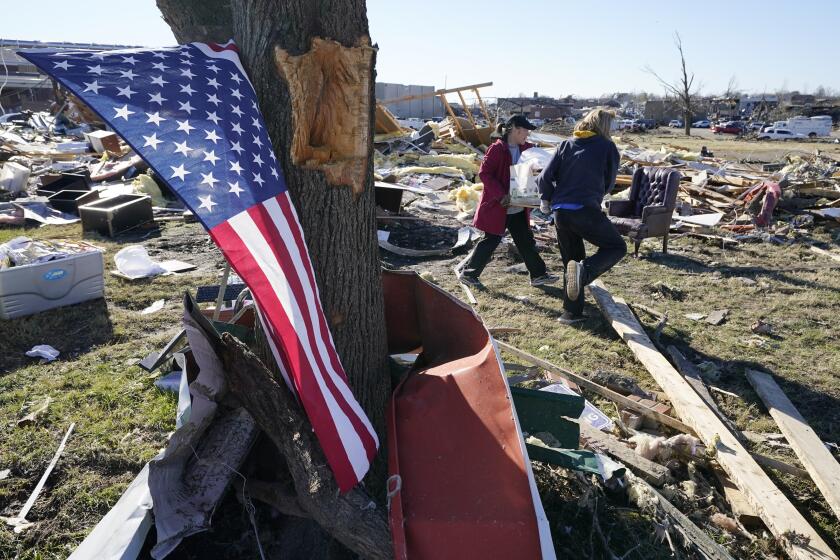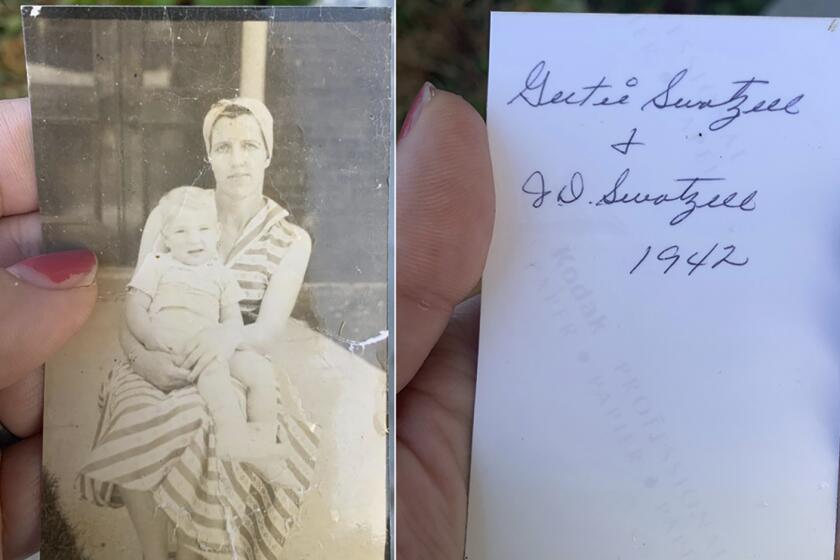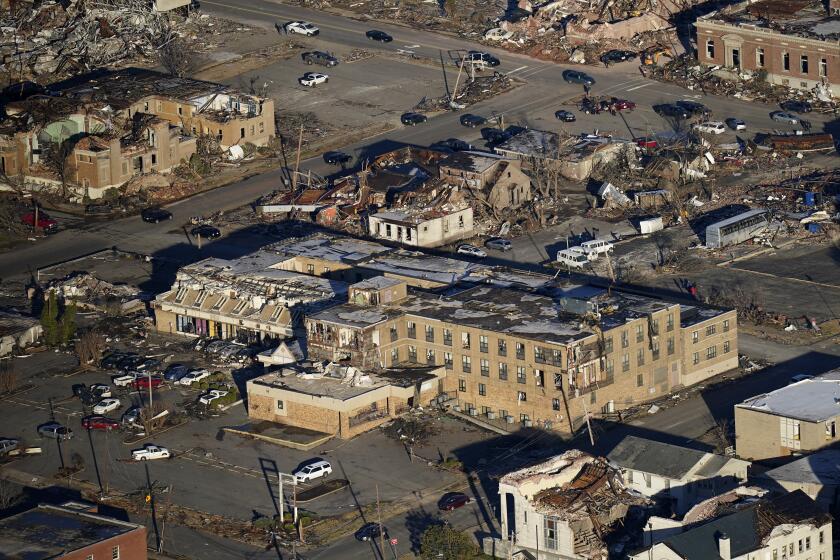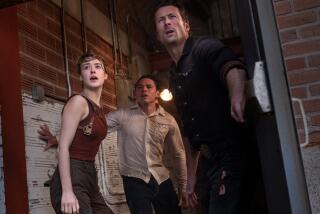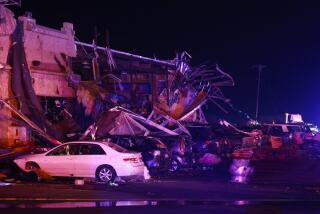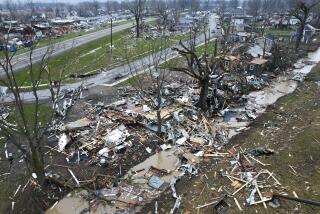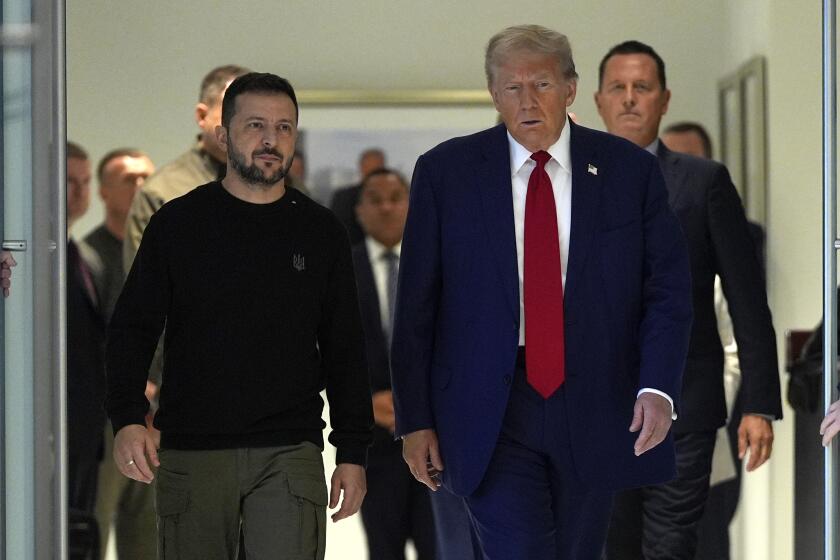On a single Kentucky street, the tornado killed 7 children
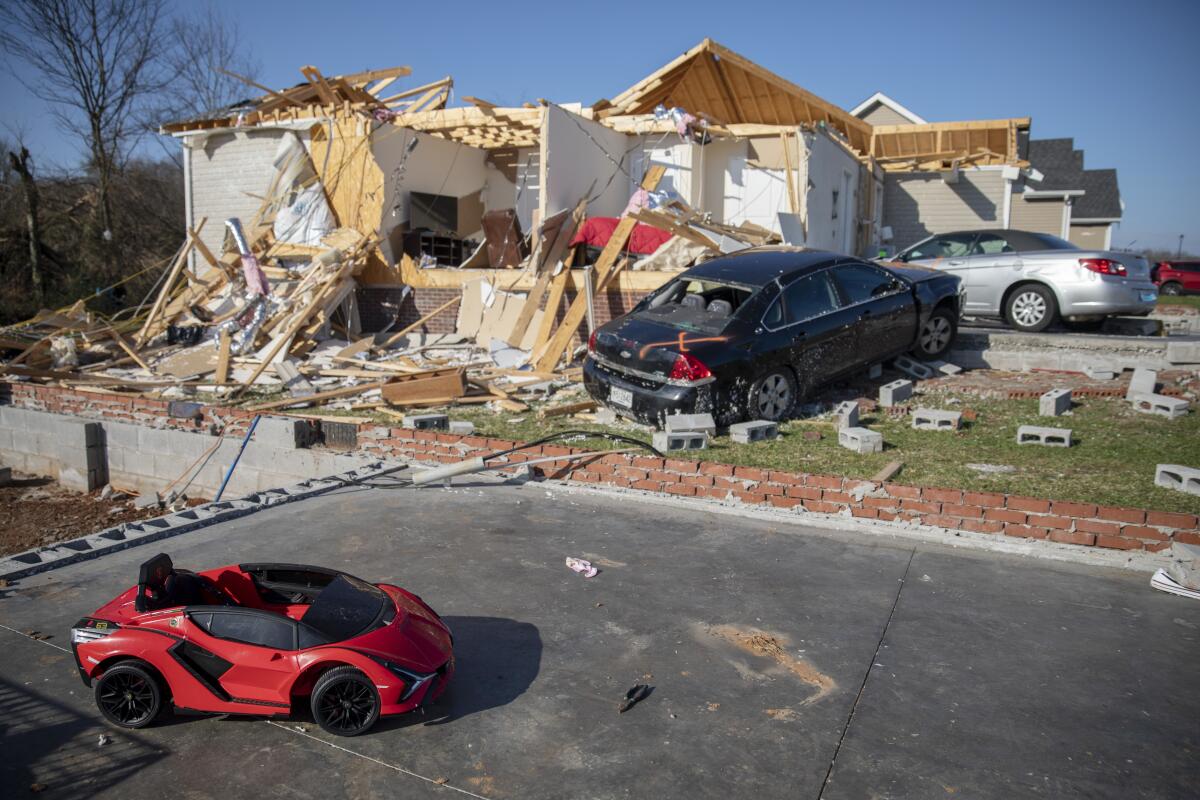
BOWLING GREEN, Ky. — The little red wagon was flipped upside down on a heap of rubble — a pile of boards and bricks, a mangled blue bicycle, a baby doll.
Behind it, there was little more than a hole in the ground where a house had stood. Across the street, the tidy homes on this cul-de-sac were reduced to mounds of lumber. Clothes hung from the branches of snapped trees. The walls of one house were gone, and the only thing left standing inside was a white Christmas tree.
When a tornado touched down in Bowling Green, Ky., in the middle of the night, its violence was centered on this friendly subdivision, where everyone waved at one another and giggling children spent afternoons tooling around on bikes on the sidewalks. Fourteen people died in a few blocks, 11 of them on a single street, Moss Creek Avenue. Entire families were lost, among them seven children, two of whom were infants.
Neighbors who survived are so stricken with grief that they struggle to speak of it. All around them, amid the ruins, is evidence of the kids they used to watch clamber on and off the school bus.
Melinda Allen-Ray has barely slept since early Saturday, when tornado alerts started screaming and she carried her grandchildren into the bathroom as winds whipped her house apart. After just minutes of destruction, there was silence. She went outside and heard her neighbors’ screams.
“I heard them — it traumatized me. I think about that each night when I go to sleep, when I do sleep,” she said. In her dreams she hears the screaming and wakes up. She wept all weekend.
The twisters that ripped through the Midwest and South were indiscriminate in the damage they inflicted and the people they killed.
“I just think about all those babies,” she said.
Hers is a diverse community of families from around the world — Bosnia-Herzegovina, Myanmar, Nigeria — many of whom fled from human-caused violence. For some, this fresh destruction triggers thoughts of the dark days in their homelands, where they hid from bombs and lost whole families.
“We come from war. This reminds us — it touches the memory of that, where we’ve been and how we came here,” said Ganimete Ademi, a 46-year-old grandmother who fled Kosovo in 1999 during the war there, in which she lost her uncle and a nephew. Now she looks around her own neighborhood.
“I turn my memory back to 22 years ago,” she said.
A photo from a tornado-damaged home in Kentucky landed almost 130 miles away in Indiana.
One of the families that lost many members was from Bosnia. Two brothers lived in homes next door to each other with their families, Ademi said. They were happy and gregarious, holding summertime parties in the yard. From the two brothers’ households, one woman died, along with two children and two infants, police said. Their surviving relatives said it’s too difficult to speak of it.
Another family here lost six members: three adults, a 16-year-old girl, a 4-year-old boy and another child.
Around the corner, a 77-year-old grandmother was killed. Two others from the neighborhood died of their injuries at the hospital.
“That’s hard to think about — you go to bed, and your entire family is gone the next day,” said Ronnie Ward of the Bowling Green Police Department. They usually tell people to get in a bathtub and cover up with a mattress, he said, but that probably would’ve made little difference here: Some homes were destroyed so completely that the tornado ripped all they way through the floor, exposing the earth below.
Rand Paul, like many other conservatives, opposes aid for a disaster until it hits home.
Now, they comb through what remains, turning over every strip of drywall and each twisted car to make sure there aren’t more victims underneath. It can be horrific work, Ward said, but they try to steady themselves enough because they know it must be done.
“So you go about that task of trying to get this work done, and then you come across a wagon,” he said, standing near the Radio Flyer toy wagon bent and broken on a pile. “And you think, that’s associated with a child somewhere. And did that child live? Those thoughts, they overtake you, they overwhelm you.”
What these children left consumes them. There’s a Barbie doll missing a leg. A reindeer stuffed animal. A scooter, a toy horse, a hula hoop. There’s a pink Disney princess backpack. A car from “Paw Patrol,” and bedding printed with the faces of its goofy animal first responders.
The people who’ve had to see it are reckoning with how close they and their own children came to death. As the tornado tore through the subdivision, it destroyed some houses and damaged others, yet left some just next door unscathed.
Breaking News
Get breaking news, investigations, analysis and more signature journalism from the Los Angeles Times in your inbox.
You may occasionally receive promotional content from the Los Angeles Times.
“It’s almost hard to look at, because how did it miss that house but it got this house?” Ward said.
A tree shot through the neighborhood like a missile and landed in Ademi’s backyard, about a dozen feet from where she’d cowered with her husband. Her four children and two grandchildren live nearby. “This tree could have come in my house, and we’d all be gone too,” she said.
The tornado turned just as it got to Benedict Awm’s house. Inside, he, his wife, their 2-year-old son and infant held one another under a blanket to protect their eyes and bodies from the broken glass shooting through shattered windows. His wife shook and asked if they would die. He said he didn’t know.
“It’s terrible — you can’t imagine — I thought we were dead,” he said. Had the tornado kept on its course, they would have been killed, he thinks. But instead it turned slightly. Thunderous winds turned to silence, and their house still stood. A miracle, says Awm, who moved here from war-torn Myanmar.
A new study says winter tornadoes are likely to be stronger and stay on the ground longer as the world warms.
Around the corner, someone spray-painted on their front door the words “By God’s grace we survived,” and hung an American flag from the wreckage of their rafters.
For days now, volunteers have arrived from all over with trucks and tools, and there’s comfort in that.
“Sometimes it makes me want to cry, to see how people are willing to help me,” Awm said.
Ben Cerimovic, an immigrant from Bosnia who also lives in Bowling Green, volunteered his help Saturday and Sunday, but he had to take Monday off to gather his emotions.
“Every time I see this, and I hear about those kids, I think about mine,” he said. “What if they were my kids?”
More to Read
Sign up for Essential California
The most important California stories and recommendations in your inbox every morning.
You may occasionally receive promotional content from the Los Angeles Times.
